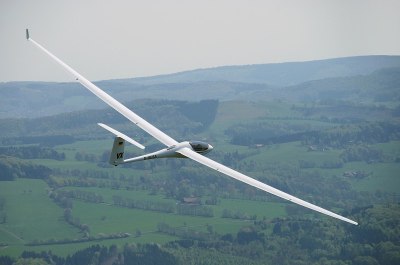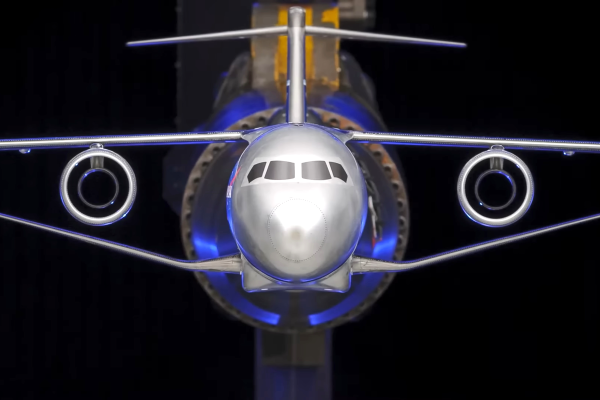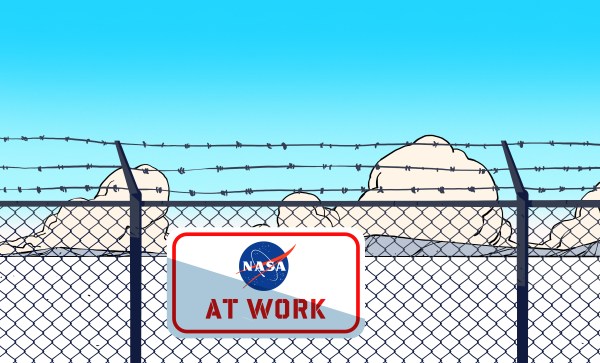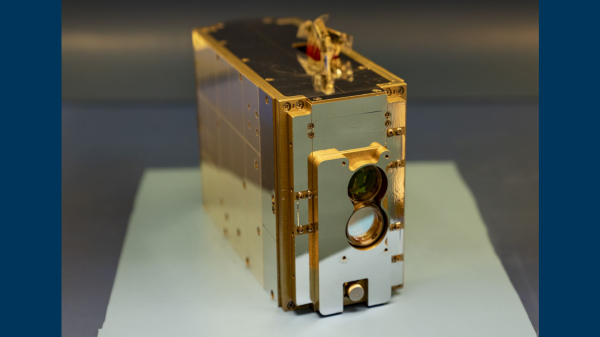Too much of a good thing is generally a bad thing, but a surfeit of asteroid material is probably a valid exception to that rule. Such was NASA’s plight as it started to unpack the sample return capsule recently dropped off by the OSIRIS-REx spacecraft as it flew by Earth, only to discover it was packed to overflowing with samples of asteroid Bennu. The spacecraft, which arrived at Bennu in 2018 and spent a good long time mapping the near-Earth asteroid, apparently approached its carefully selected landing site a bit too energetically and really packed the sample container full of BennuBits™ — so much so that they could actually see sample shedding off into space before stowing it for the long trip back to Earth. The container is now safely in the hands of the sample analysis team, who noted that everything in the TAGSAM (Touch and Go Sample Acquisition Module), even the avionics deck, is covered with black particles, each precious one of which needs to be collected and cataloged. The black stuff is especially interesting to planetary scientists, as it might be exactly what they were after when they selected Bennu, which may have broken off a much larger carbon-rich asteroid a billion or so years ago. It’ll be interesting to see if these interplanetary hitchhikers have anything to tell us about the origin of life in the solar system.
nasa279 Articles
Truss-Braced Wings Could Bring New Look To Runways Worldwide
Airliners have looked largely the same for a long time now. The ongoing hunt for efficiency gains has seen the development of winglets, drag reducing films, and all manner of little aerodynamic tricks to save fuel, and hence money.
Boeing now has its eye on bigger, tastier goals. It believes by switching to a truss-braced wing design, it could net double-digit efficiency gains. It’s working together with NASA to see if this concept could change the face of commercial aviation in decades to come.
Aspect Ratio Matters

The key goal of using a truss-braced wing is to enable an airliner to use a wing much thinner and narrower than usual. These “high aspect ratio” wings are far more efficient than the stubbier, wider wings currently common on modern airliners. But why is aspect ratio so important, and how does it help
If you’ve ever looked at a glider, you will have noticed its incredibly long and narrow wings, which stand it apart from the shorter, wider wings used on airliners and conventional small aircraft. These wings are said to have a high aspect ratio, the ratio between the square of the wingspan and the projected area of the wing itself.
These wings are highly desirable for certain types of aircraft, as lift-to-drag ratio increases with aspect ratio. Any wing that generates lift also generates some drag, but this can be minimized through careful wing design. By making the wings longer and narrower, and thus higher in aspect ratio, the wing tip vortices generated by the wing are weakened. This reduces drag on the plane, and quite significantly so. Continue reading “Truss-Braced Wings Could Bring New Look To Runways Worldwide”
Just How Is Voyager 2 Going To Sort Out Its Dish Then?
Anybody who has set up a satellite TV antenna will tell you that alignment is critical when picking up a signal from space. With a satellite dish it’s a straightforward task to tweak the position, but what happens if the dish in question is out beyond the edge of the Solar System?
We told you a few days ago about this exact issue currently facing Voyager 2, but we’re guessing Hackaday readers will want to know a little bit more about how a 50+ year old spacecraft so far from home can still sort out its antenna. The answer lies in NASA Technical Report 32-1559, Digital Canopus Tracker from 1972, which describes the instrument that notes the position of the star Canopus, which along with that of the Sun it can use to calculate the antenna bearing to reach Earth. The report makes for fascinating reading, as it describes how early-1970s technology was used to spot the star by its specific intensity and then keep it in its sights. It’s an extremely accessible design, as even the part numbers are an older version of the familiar 74 logic.
So somewhere out there in interstellar space beyond the boundary of the Solar System is a card frame full of 74 logic that’s been quietly keeping an eye on a star since the early 1970s, and the engineers from those far-off days at JPL are about to save the bacon of the current generation at NASA with their work. We hope that there are some old guys in Pasadena right now with a spring in their step.
Discussing The Finer Points Of Space-Worthy Software
At the dawn of the Space Race, when computers were something that took up whole rooms, satellites and probes had to rely on analog electronics to read from their various sensors and transmit the resulting data to the ground. But it wasn’t long before humanity’s space ambitions outgrew these early systems, which lead to vast advancements in space-bound digital computers in support of NASA’s Gemini and Apollo programs. Today, building a spacecraft without an onboard computer (or even multiple redundant computers) is unheard of. Even the smallest of CubeSats is likely running Linux on a multi-core system.

As such, software development has now become part an integral part of spacecraft design — from low-level code that’s responsible for firing off emergency systems to the 3D graphical touchscreen interfaces used by the crew to navigate the craft. But as you might expect, the stakes here are higher than any normal programming assignment. If your code locks up here on Earth, it’s an annoyance. If it locks up on a lunar lander seconds before it touches down on the surface, it could be the end of the mission.
To get a bit more insight into this fascinating corner of software development, we invited Jacob Killelea to host last week’s
Software for Satellites Hack Chat. Jacob is an engineer with a background in both aero and thermodynamics, control systems, and life support. He’s written code for spacecraft destined for the Moon, and perhaps most importantly, is an avid reader of Hackaday.
Continue reading “Discussing The Finer Points Of Space-Worthy Software”
Miners Vs NASA: It’s A Nevada Showdown
Mining projects are approved or disapproved based on all kinds of reasons. There are economic concerns, logistical matters, and environmental considerations to be made. Mining operations can be highly polluting, or they can have outsized effects on a given area by sheer virtue of the material they remove or the byproducts they leave behind.
For a proposed lithium mining operation north of Las Vegas, though, an altogether stranger objection has arisen. NASA has been using the plot of land as a calibration tool, and it doesn’t want any upstart miners messing with its work.
The Fake Moon Landing Quarantine
We aren’t much into theories denying the moon landing around here, but [Dagomar Degroot], an associate professor at Georgetown University, asserts that the Apollo 11 quarantine efforts were bogus. Realistically, we think today that the chance of infection from the moon, of all places, is low. So claiming it was successful is like paying for a service that prevents elephants from falling through your chimney. Sure, it worked — there hasn’t been a single elephant!
According to [Degroot], the priority was to protect the astronauts and the mission, and most of the engineering money and effort went towards that risk reduction. The — admittedly low — danger of some alien plague wiping out life on Earth wasn’t given the same priority.
NASA Team Sets New Space-to-Ground Laser Communication Record
[NASA] and a team of partners has demonstrated a space-to-ground laser communication system operating at a record breaking 200 gigabit per second (Gbps) data rate. The TeraByte InfraRed Delivery (TBIRD) satellite payload was designed and built by [MIT Lincoln Laboratory]. The record of the highest data rate ever achieved by a space-to-Earth optical communication link surpasses the 100 Gbps record set by the same team in June 2022.
TBIRD makes passes over an ground station having a duration of about six-minutes. During that period, multiple terabytes of data can be downlinked. Each terabyte contains the equivalent of about 500 hours of high-definition video. The TBIRD communication system transmits information using modulated laser light waves. Traditionally, radio waves have been the medium of choice for space communications. Radio waves transmit data through space using similar circuits and systems to those employed by terrestrial radio systems such as WiFi, broadcast radio, and cellular telephony. Optical communication systems can generally achieve higher data rates, lower loses, and operate with higher efficiency than radio frequency systems. Continue reading “NASA Team Sets New Space-to-Ground Laser Communication Record”

















